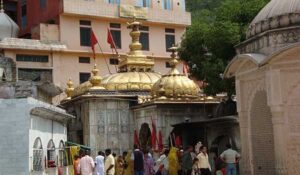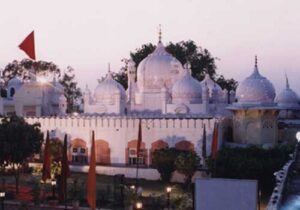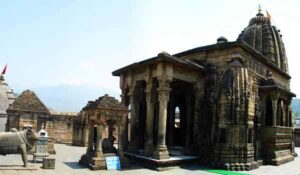Devbhoomi Himachal, often known as heaven on earth, has very rich mythological past. There are number of famous temples in Himachal swarmed by massive number of devottes from all corners of the world. Bharmour, land of Gods, has many beautiful and one of the oldest temples in India. These temples fascinate with their architecture, carvings and deity images of 7th century AD. These sacred shrines are very important part of life in and around Bharmour. Here is list of top 5 most famous temples of Bharmour that would prove why it is called land of Gods.
Chaurasi Temple
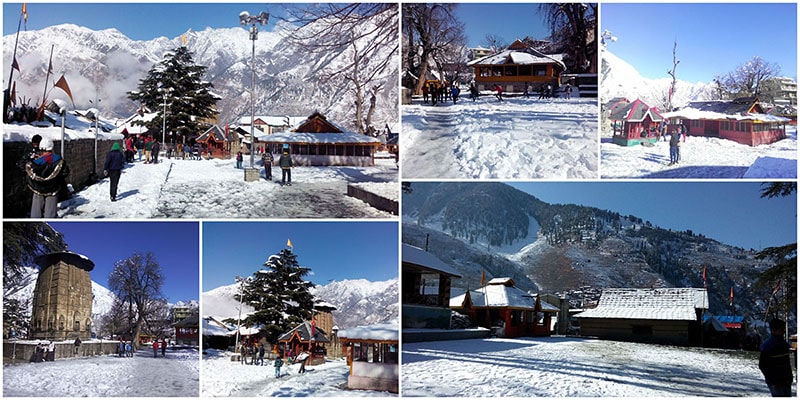
Chaurasi temple is not one temple but a complex of 84 temples. As they all are located in same temple complex hence they are clubbed together as one temple. Chaurasi temple commplex has famous temples of Lord Ganesha, Lord Shiva, Lord Narsimha, Lakshana mata, Chamunda Devi, Sheetla Mata, Lord Hanuman, Swami Kartikeya, Lord Nandi Bull, only temple of Lord Yamraj (Dharamraj) in the world, Shri 108 Jai krishan ji Giri (Naga Baba) and seat of Chitragupta. Some of these temples were built 1400 years ago in 750AD. 84 temple complex also as ardhganga dham and large Deodar tree known as God wood. It is believed that Ardhganga has water of 7 holy rivers of India. Apart of these temples Chaurasi temple complex has many other temples having Surya linga or Suryavanshi linga, Rameshvar (Trameshvar) linga, Kubera linga, Jyoti linga, Mohoni linga and the lingas representing Gupt-mahadev, Narpat- mahadev (narbadeshvar) and Bijli-mahadev. Linga known as Ekadash rudra (eleven-rudri) is also seen on the platform of Manimahesh temple.
Bharmani Mata temple
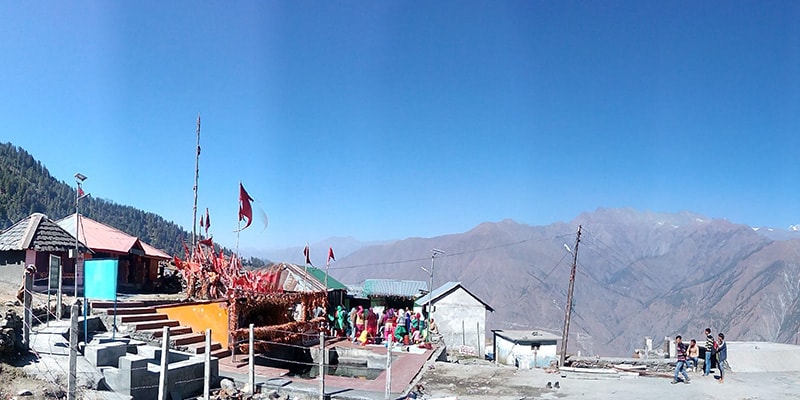
Bharmani Mata temple is at the top of the ridge covered with full of pine and deodar trees situated 4 km from the Bharmour. The place is mainly known for Goddess Bharmani Mata one of the avatars of Durga Ma. Bharmani Devi is the patron Goddess of people of Bharmour. There is Bharmani holy pool in front of Bharmani Mata temple. The dip in the pool is compulsory to complete the holy Manimahesh Yatra. It is believed that Goddess Bharmani had stolen this holy water from Lord Sandhola Naag which is located on another side of the ridge. Seven water streams are coming from the bottom of cave which are presently serving water supply facility to Bharmour and running many flourmills. The place is mountainous with aesthetic natural beauty and gives glorious view of beautiful Bharmour.
Swami Kartikeya temple
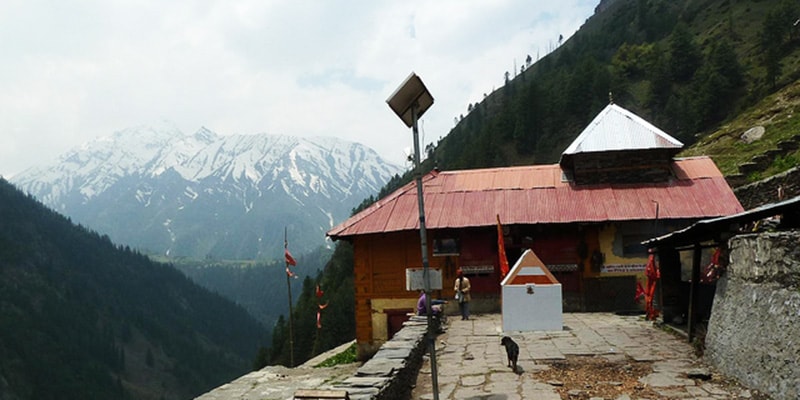
Kartikeya Swami or locally called the Devta “Kelang Wazir” is worshipped near parts of Bharmour as their main deity at Chamba district of Himachal Pradesh. Situated at Kugti Village, which is 18 km from Bharmour is the major deity of the tribe Gaddi. The temple of Kartikeya Swami is visited every year by thousands of devotees when the trek is opened in the month of March–April (Covered with snow in the winters).
Banni Mata Temple
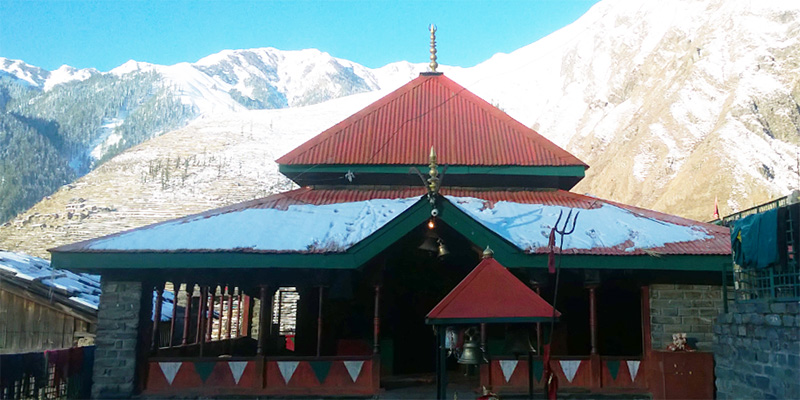
Banni Mata Temple, also known variously as the Mahakali Banni Mata Temple, is located in Chamba District, a hill station in the State of Himachal Pradesh in north India. This temple is situated at a height of 8,500 feet, right at the base of beautiful Pir Panjal Range in the Chamba Valley. It is an ancient temple dedicated to Devi Kali, a goddess figure in Hinduism. The temple is surrounded by deep forests at the foot of the Himalayas. It is pilgrimage place which hold a rich inclusion of flora and natural beauty. It is famous as Shakti Devi Temple too. It is near to Tundah village and just opposite to Manimahesh Peak. This temple is named as Banni because this place has a lot of Ban trees or Oak trees.
Shivashakti Mata temple
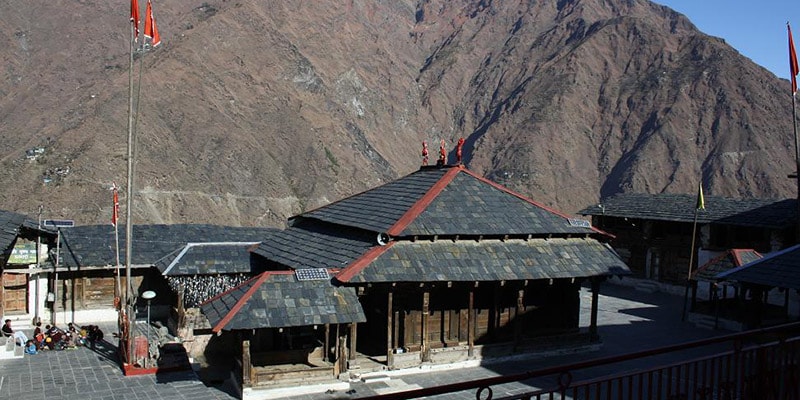
Shivashakti Mata temple complex was constructed in 650 AD at Chhatrari village by king meru Verman. The temple has specific sculpture using wood and slate roof. The idol placed inside the temple is made of Panchdhatu (An alloy of 5 metals), and is quite lustrous. It is said by the elders of the village that the temple used to be a revolving one on base over a pivot. But later on it was fixed to the ground. The original shrine at Shivshakti Devi temple is surrounded by a gallery supported by twelve heavy pillars of deodar wood. The entrance to the sanctum is decorated with a double row of standing figures on each side. The outermost wall painting projects to the right and left at the top corners, enclosing two sitting lions. The next frame consists of two jambs alternately decorated with three standing deities and three smaller crouching ganas. Of the latter two are ox-headed; two lion-headed, one has elephant ears and one a face on his belly.
